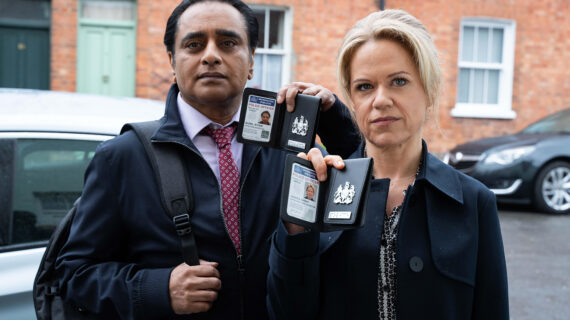Frederica Freyberg:
From the cost of things to wages and jobs, ahead of Labor Day we check in on the annual State of Working Wisconsin report with UW-Madison economist and associate director of its High Road Strategy Center, Laura Dresser. And thanks a lot for being here.
Laura Dresser:
I’m really glad to be here. Thanks for having me.
Frederica Freyberg:
So in a nutshell, what is the overall state of working Wisconsin?
Laura Dresser:
You know, what we find this year, I think, is a continuation of the recovery from the pandemic shutdowns. We know we’ve been seeing high job production. That’s still true. 25,000 new jobs across the last year in the state of Wisconsin, highest ever number of jobs. We have low unemployment rates and we had a strong wage increase at the median last year.
Frederica Freyberg:
So what’s responsible for this growth in jobs as you describe?
Laura Dresser:
You know, the economy is ticking along well. I know there’s a lot of discussion about whether people think the economy is good, but from the perspective of workers, where a high demand in the labor market means that people can get into the labor market and it means that people when they hold jobs, they can ask more of those jobs. They have a little better position, bargaining position. That’s all true in this labor market. And it’s a continuation of what we’ve seen coming out of that, the severe lockdown, the shutdowns.
Frederica Freyberg:
And so that’s all great news but is there any sense that it is slowing down?
Laura Dresser:
You know, I think there’s, you know, obviously that last month’s national jobs data was softer than expected. There was a recent revision to the total national numbers on jobs. So the rate, the pace of job growth is slowing. We’re still adding jobs and the unemployment rates have been pretty steady and very low, like pretty steady below 3% in the state and or around 3%. That’s really low unemployment. And that and so that bargaining position for workers, like there are, there are clouds on the horizon. A lot of concern about what comes next. And I think that’s what everybody is looking at, future job production and that unemployment rate to change. But for now like very solid. We’ll take now.
Frederica Freyberg:
So again what does that do for wages? What are the kind of specifics on that?
Laura Dresser:
Yeah. So probably everybody remembers 2022 was a year of really high inflation. That means that wage increases in that year did not keep up with the cost of living. So we’d had steady wage growth. And then a step back in last year’s report. This year, we had the strongest one-year median wage growth that we’ve seen. And that’s all inflation adjusted. So the one — we — wages increased at the median by $0.97 an hour or almost a dollar an hour. That’s the strongest we’ve ever seen. It ties with 2019. But that’s really strong step forward in wages. And we’re very near the 2021 peak in wages. So strong wage growth because workers are bargaining for more. Employers are needing to pay more to find workers in these tight labor markets.
Frederica Freyberg:
It’s still amazing to me that our minimum wage sits at $7.25 an hour.
Laura Dresser:
Yeah, the state of Wisconsin is, you know, the labor market infrastructure, the kind of wage standards we set are being really left behind by neighboring states. It’s above $10 an hour in both Michigan and Minnesota. $13 an hour for the minimum in Illinois. Wisconsin is just out of touch in terms of setting the standard in our labor market for the base.
Frederica Freyberg:
You also describe in your report that there is a gender pay gap that persists.
Laura Dresser:
Yeah, it’s, you know, we’ve seen some shrinking in inequality. One of the exciting things about this recent period is lower wage workers have made bigger gains. And we know that even over the last 40 years, women have made gains relative to men. There’s still a substantial pay gap. And it’s especially extreme for Black women, for Hispanic women whose workers are — whose wages are 25 and 33% below white men’s wages.
Frederica Freyberg:
So your report also suggests that there are ways to make these gains durable, as you say. How in your mind do you do that?
Laura Dresser:
I think one that you already mentioned is, is the minimum wage. Raising the minimum wage and trying to get the kind of floor under the labor market up more in touch with neighboring states, up more in touch with the cost of living, living would really matter for workers. I think restoring rights to collective, collective action, collective bargaining, restoring union rights in this state really matters for workers ability to, you know, pursue unions and to raise wages. And then I think the other thing we see in this state, we used to have a very strong relative advantage in women’s work. Women were much more likely to work in Wisconsin than in the rest of the nation. And that is shrinking, our relative advantage in women’s work. And so I think really attending to the question of our early care and education infrastructure, investing in that infrastructure, both so that the workers who are largely women who work in it, can earn decent wages and so that families who all rely on it, but especially moms who carry the burden of care, can really get accessible, affordable childcare.
Frederica Freyberg:
All right. Laura Dresser, thanks very much.
Laura Dresser:
Thank you.
Search Episodes
Related Stories from PBS Wisconsin's Blog

Donate to sign up. Activate and sign in to Passport. It's that easy to help PBS Wisconsin serve your community through media that educates, inspires, and entertains.
Make your membership gift today
Only for new users: Activate Passport using your code or email address
Already a member?
Look up my account
Need some help? Go to FAQ or visit PBS Passport Help
Need help accessing PBS Wisconsin anywhere?

Online Access | Platform & Device Access | Cable or Satellite Access | Over-The-Air Access
Visit Access Guide
Need help accessing PBS Wisconsin anywhere?

Visit Our
Live TV Access Guide
Online AccessPlatform & Device Access
Cable or Satellite Access
Over-The-Air Access
Visit Access Guide
 Passport
Passport

















Follow Us